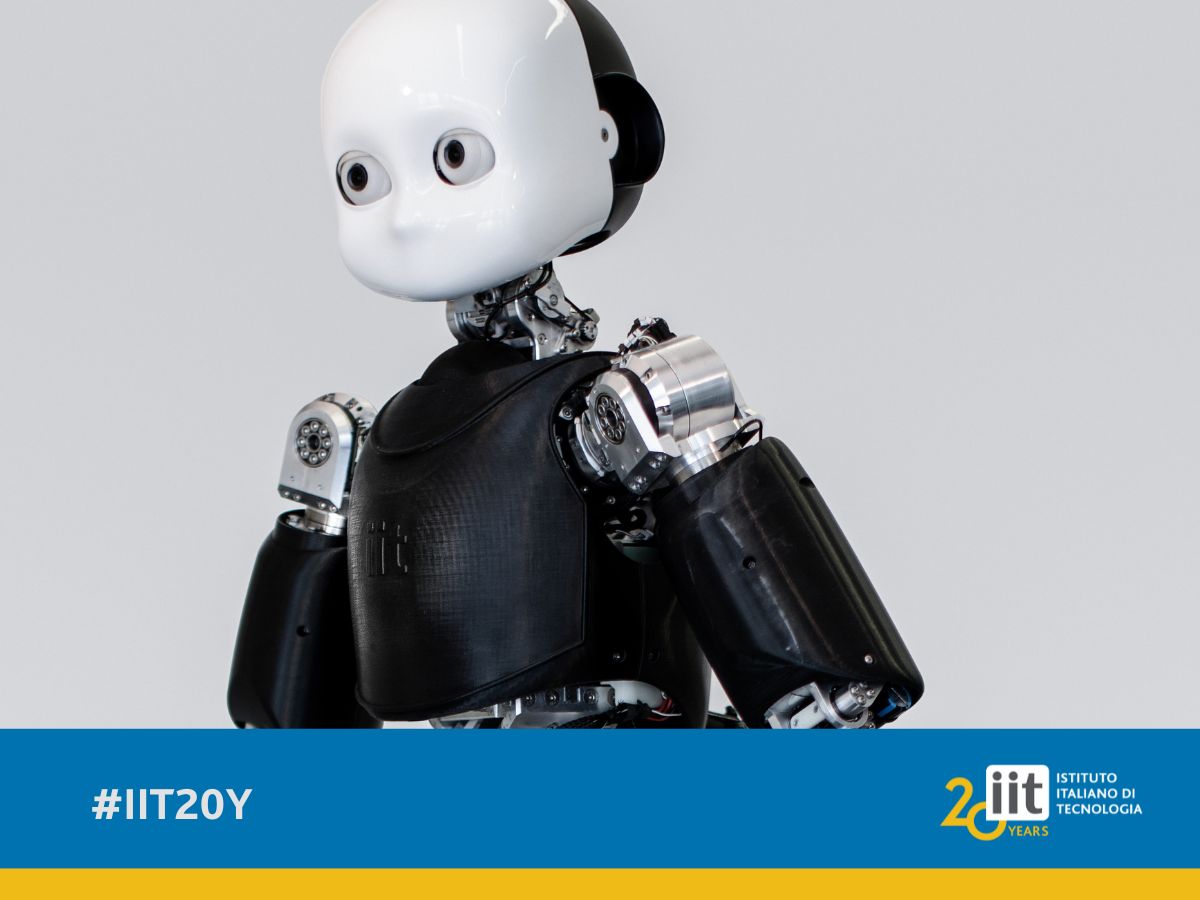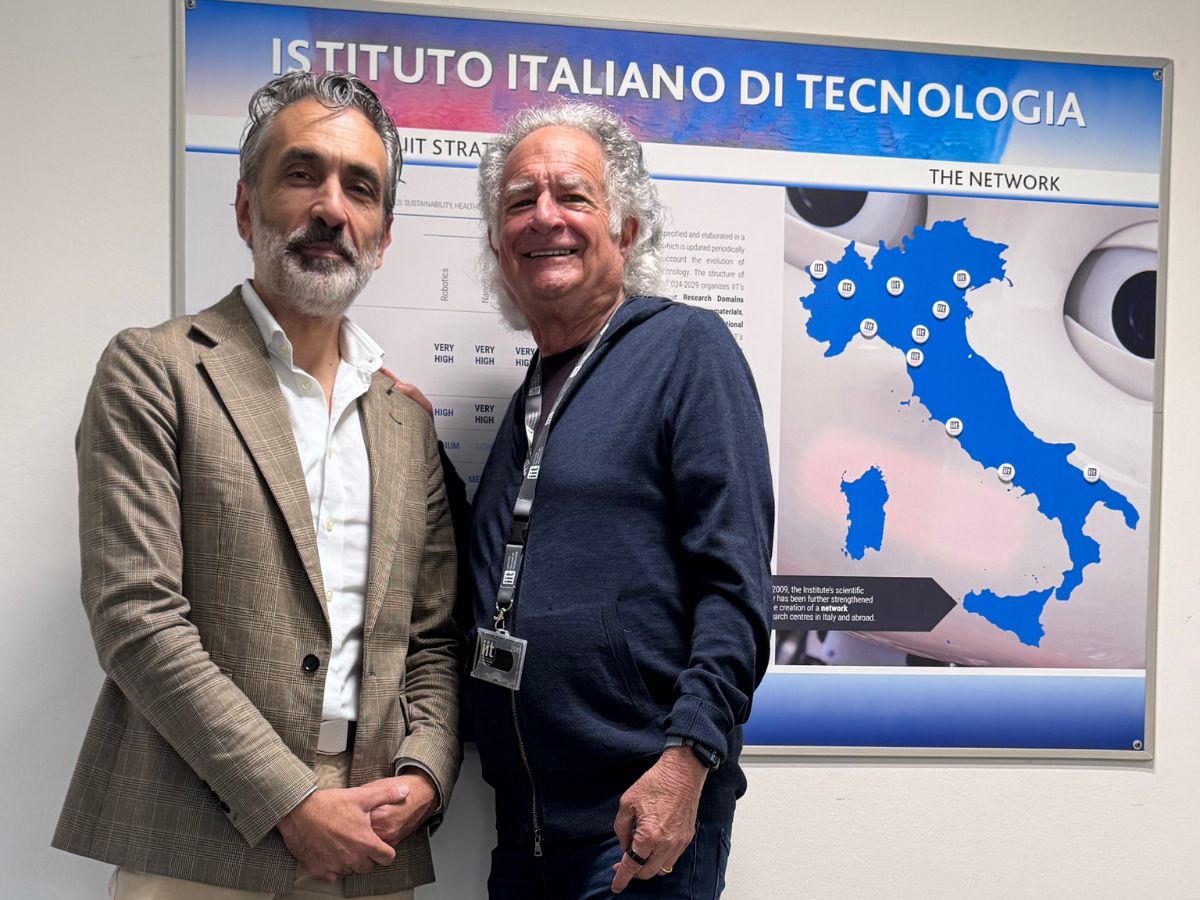Intro
IIT celebrates its twentieth anniversary. An important milestone for our Institute and for the contribution it has made over the years to the scientific development of the country through the development of research projects. Time, and the results achieved, have highlighted the validity of IIT’s organisational model, which has been replicated with the creation of other similar scientific institutions. IIT has gained standing thanks to the increasing number of researchers who have carried out their studies in the main Genoa branch and in the Foundation’s other eleven centres between Rovereto and Lecce. Our scientists have also contributed to the constant sharing of knowledge, demonstrating a drive that has brought IIT and the world of research closer to the general public. In the second half of 2023, the twentieth anniversary of IIT will be celebrated through a range of institutional and scientific events. The first of these will be taking place in Morego on 21 September, and our magazine will be providing details of the event in the days to come.
IIT OPENTALK is also aimed at underscoring this milestone, dedicating a special space to our twentieth anniversary that plays host to accounts from the people who have taken part in this exciting adventure at IIT since the very beginning.
The first figure in our gallery is the Scientific Director Giorgio Metta
When did your professional experience in IIT begin, and what was your first task as a researcher?
I was in the United States, working as a researcher at the Massachusetts Institute of Technology – MIT, where I began to think about returning to Genoa, where I had studied, gained my PhD and taken my first steps in the world of research. The challenge that was presented to me was ambitious; to create an open-source humanoid robot that could become a global platform for research in the field of robotics and artificial intelligence. When I accepted this challenge, IIT did not yet have a physical office, but the enthusiasm for the start of a new adventure was clearly felt in the small community of scientists that were beginning to develop this project. I decided to take the opportunity and began to form an initial vision of IIT robotics.
What have been the most important stages in your career at IIT?
That initial period was followed by a rapid and highly intensive series of events that saw the development of the robotics group I was leading as well as the international consolidation of our first humanoid robot, iCub, which allowed IIT to gain international recognition. A few years on, my group had grown to include more than 100 scientists from all over the world, representing an important nucleus for the creation of an international community that continues to contribute to developing what is, to all intents and purposes, the most widespread humanoid robotics and AI research platform in the world. My professional life thus became more managerial than operational, allowing me to gain skills that have since proven essential in my role as Scientific Director of IIT.
What was the most exciting moment in the course of your research?
One of the most exciting moments in the path that has brought me here was without a doubt the realisation of the iCub project with the construction of our first humanoid, to which I feel a father, together with the colleagues who have accompanied me on this adventure. Seeing plans and drawings go from paper to the computer screen, and then become something real and tangible inside a humanoid capable of taking its first steps in the world stirred a mixture of emotions that is hard to describe.
How did you feel when an extremely demanding selection process led to your appointment as the Scientific Director of IIT?
The international selection process that I underwent was extremely demanding and it led me to encounter Italian and foreign experts who already held important roles in top Italian and foreign institutes. Taking part in such a competitive selection process and manage to lead the research institute that I saw come into existence and grow was a victory that was, obviously, immensely gratifying. I also felt a huge responsibility. I have gone from managing a structure with around one hundred people to a network of centres that has almost 2000 people, with more than 20 different scientific profiles, and I have had to study extensively in order to fully understand all the areas of research developed by the Institute, an activity that has allowed me to discover fascinating and stimulating subjects that I was previously only partially aware of.
IIT now and then; what was it like, what is it like now, and how would you like to see it?
The IIT of the past was an innovative idea, a start-up that could have failed, representing the desire to try something new and courageous in the panorama of Italian research. The IIT of today is a consolidated organisation that is capable of generating value thanks to internationally competitive research and the ability to transfer the results of the scientists’ work to the economic and social fabric of our country. I would like to stress how, after having proved that we are good researchers, it is now increasingly necessary to show that we can have an impact on the country’s economic fabric.
The IIT of the future, as set out in the new Strategic Plan, is a research centre that, thanks to the valorisation of experimental data, artificial intelligence and the growing computing power at our disposal, will be able to improve its scientific performance, proposing new solutions to the problems faced by our society, such as challenges related to environmental and social sustainability, from the ageing of the population to health, from the reduction of waste to the optimisation of available resources for a more habitable world for us and for future generations.
I also see, for the future, an IIT that can serve as a replicable model for a range of disciplines, creating an even more extensive network of laboratories capable of creating an increasingly internationally competitive critical mass. 20 years have gone by since the first time that the “idea of the IIT” entered my thoughts, and what has taken place since then has gone far beyond my imagination, and I can only look to the next 20 years at the Institute with optimism and commitment, to write a new chapter in our story that is even more amazing and exciting.





